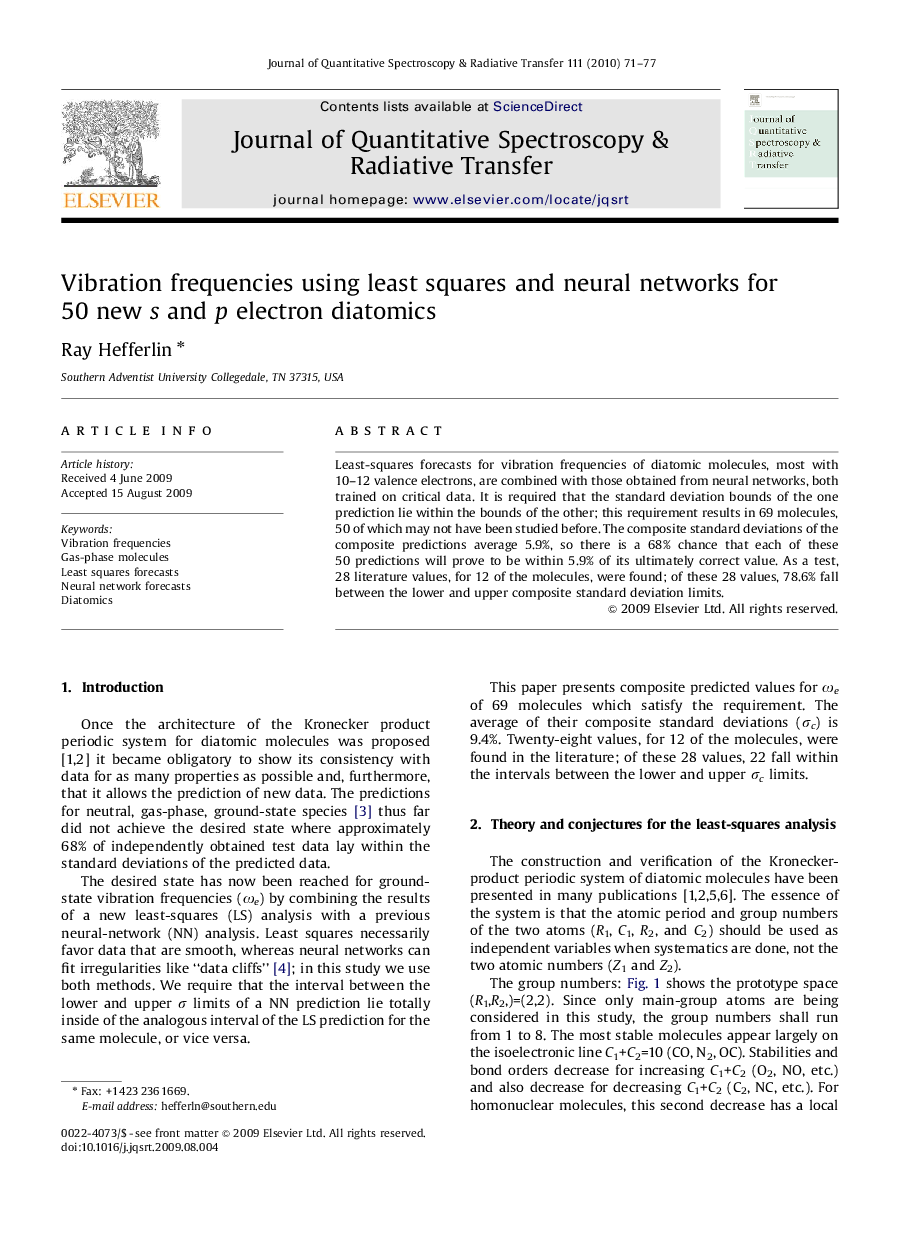| Article ID | Journal | Published Year | Pages | File Type |
|---|---|---|---|---|
| 5429941 | Journal of Quantitative Spectroscopy and Radiative Transfer | 2010 | 7 Pages |
Least-squares forecasts for vibration frequencies of diatomic molecules, most with 10-12 valence electrons, are combined with those obtained from neural networks, both trained on critical data. It is required that the standard deviation bounds of the one prediction lie within the bounds of the other; this requirement results in 69 molecules, 50 of which may not have been studied before. The composite standard deviations of the composite predictions average 5.9%, so there is a 68% chance that each of these 50 predictions will prove to be within 5.9% of its ultimately correct value. As a test, 28 literature values, for 12 of the molecules, were found; of these 28 values, 78.6% fall between the lower and upper composite standard deviation limits.
